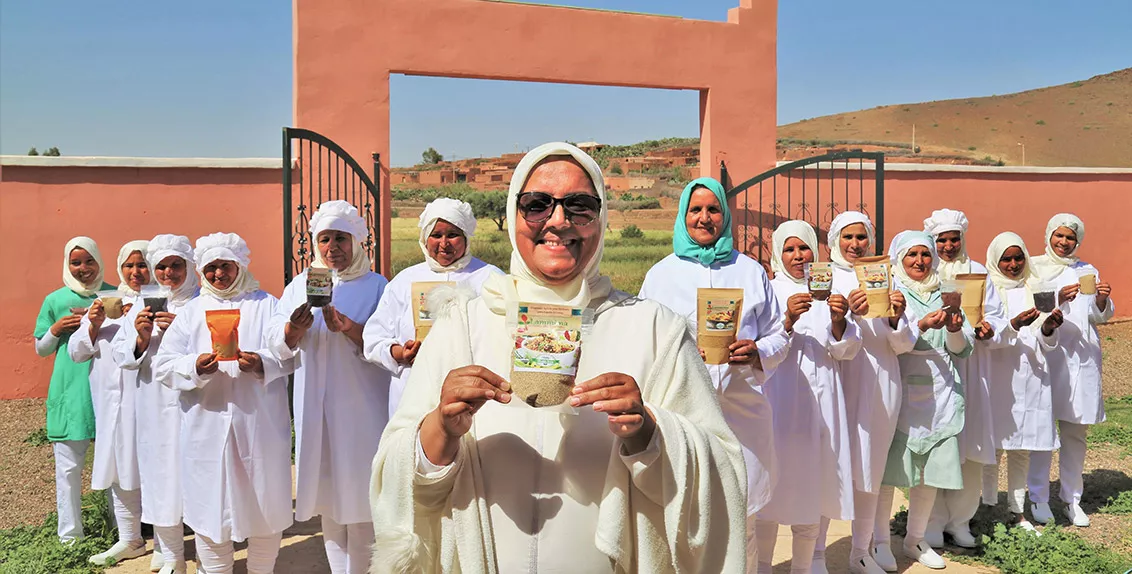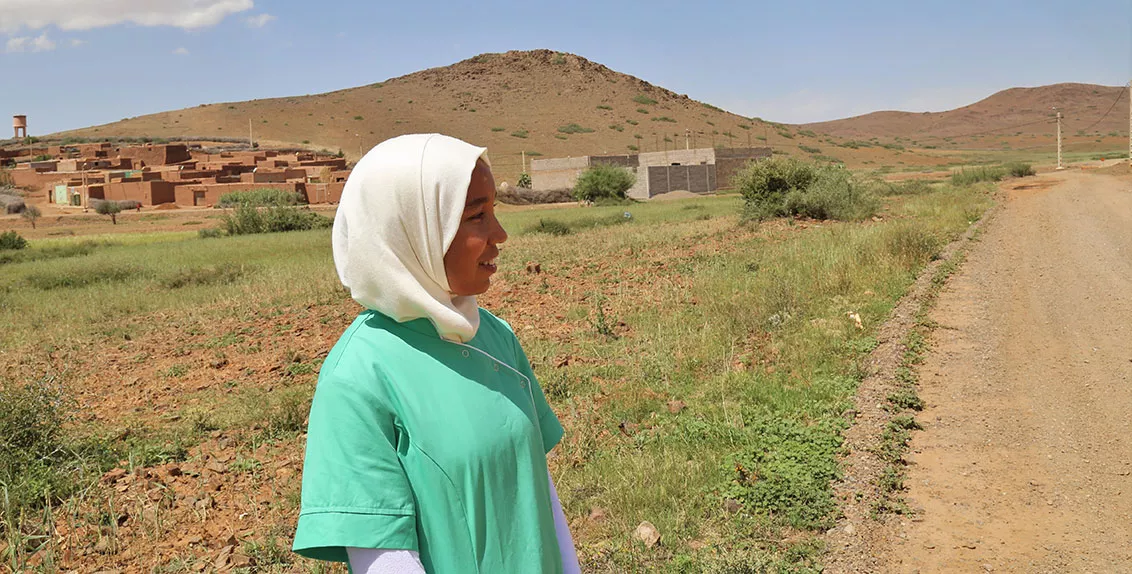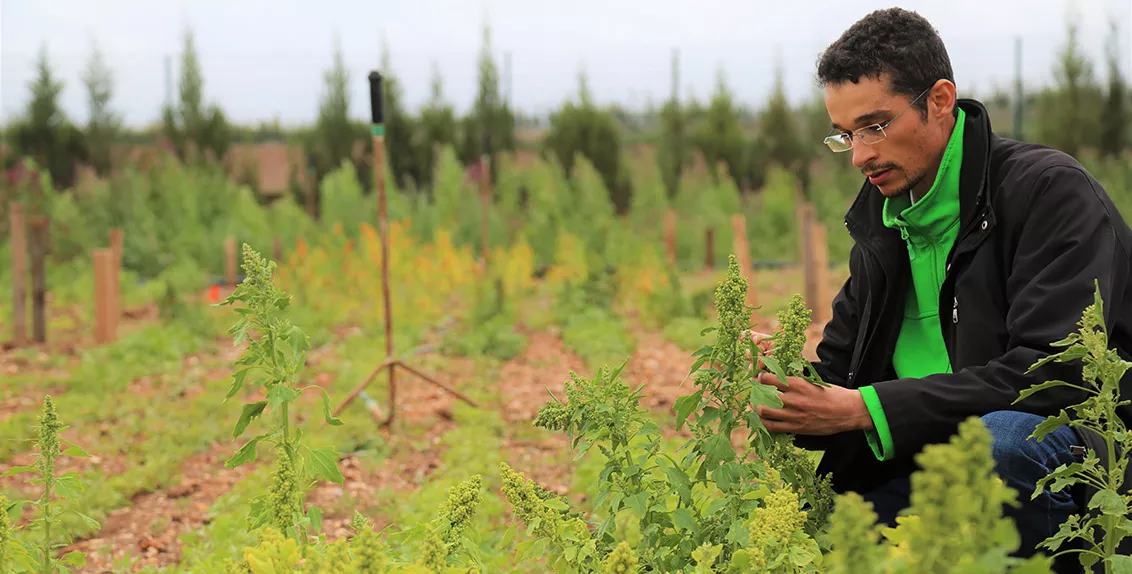Moroccan rural women come together to create quinoa value chain link
20 June 2019
At first glance Mrs. Hafida El Filahi, Mrs. Kenza Laghchaoud and Ms. Fatiha Rostan look no different from any other rural women in Morocco. They live in a far-away area called Bourrous in Rehamna Province, about 320 km from Morocco's capital of Rabat, and lead a mundane country lifestyle, looking after their households. But that is what appears on the surface. Unlike most of the rural women in the country, they are more independent and proactive in many ways. Above all, they enjoy a degree of financial independence and can support their families.
Their lives changed when a women’s cooperative was established in their area in 2008. What started as a small initiative involving just four women has grown into a business employing 30 women from nearby villages.
Aptly named 3ème Millénaire (or the 3rd Millennium in English), the cooperative produces, markets and sells a range of value-added products such as couscous - a national dish usually made of several crops including wheat, rice, maize and cactus.
Led by Mrs. Hafida El Filahi, general secretary of the cooperative, all women who work here have different stories to share but one common goal: to make a living for themselves and their families and create employment opportunities for other women in their community.
For a long time, a variety of locally grown cactus was a basic ingredient in many of their products. But due to an attack of insect called cochineal which completely devasted the cacti in the area, they had to look for alternatives. And then quinoa came about.
Though it was first introduced in Morocco back in 2000, quinoa reached the province in 2009. But it did not take off due to limited access to well-adapted and high-yielding varieties, inappropriate crop management practices, weak value chains, and limited market demand.
That was when the International Center for Biosaline Agriculture (ICBA) reached out to the cooperative through its Rehamna quinoa project to introduce best-performing quinoa genotypes developed after years of research by ICBA scientists. As these genotypes did well in local conditions, the demand for the crop rose. Many women from the cooperative, including Mrs. Hafida El Filahi, started growing these genotypes on their farms.
Quinoa is both highly nutritious and stress-tolerant. Dubbed a super crop, it contains all eight essential amino acids and many micronutrients. It is also gluten-free and has twice as much protein as maize, barley, and wheat. Quinoa can also grow in extreme soil and climatic conditions, and is thus a great choice for smallholder farmers in marginal areas like Bourrous.
Mrs. Hafida El Filahi says: "Our cooperative was created in a rural area suffering from poverty and drought. The cooperative gathered poor women from the area and gave them jobs. We are producing 30 types of traditional couscous from millet, jujube, cactus, maize and other crops. And we started recently using quinoa to make gluten-free couscous thanks to the project."
"Under the project, the cooperative received quinoa seeds and processing equipment. Also, the project provided training in quinoa production and processing and helped to promote our products, including quinoa-based couscous. The project also facilitated our participation in fairs and exhibitions such as the Salon International d'Agriculture de Meknes - SIAM (International Agricultural Exhibition in Meknes), where we showcased our products and services. We were also able to support many young women who dropped out of school due to financial constraints," she adds.
Funded by Canada's International Development Research Centre (IDRC/CRDI), the project is implemented in Rehamna Province by ICBA in collaboration with the Mohammed VI Polytechnic University (UM6P) and the Ministry of Agriculture, Fisheries, Rural Development, Water and Forests of Morocco.
Ms. Fatiha Rostan, one of the youngest women at the cooperative who is in charge of finance, says: "I had to stop my studies. But I have been working at the cooperative for about seven years. And during this period, I attended numerous training programs, and was also able to gain experience by attending a number of workshops and fairs. With the cooperative’s help, I was able to complete my professional education and earn an income to support myself and my family members. The cooperative is playing a very important role in this dry and poor area."
Mrs. Kenza Laghchaoud, a cooperative member in her late 60s, is an expert in preparing couscous. She says that their profits have increased significantly since they began adding quinoa to their products.
"I walk every day about 5 kilometers from my home to the cooperative; I would like to thank the cooperative for increasing my income and making a positive change in my life. As part of my job, I have also attended many fairs. This work helps several women like me to support their children’s education,” she says.
ICBA scientists are also working with UM6P to evaluate the genotypes at UM6P's experimental station in Ben Guerir, the capital of Rehamna Province, and other farms.
According to Mr. Youness Jnaoui from UM6P, their research efforts have so far been successful.
"We found out that ICBA’s genotypes are well adapted and perform very well; they are drought- and salt-resistant. I am very optimistic about the future of the crop, which is increasing year after year in terms of area and production. I hope that farmers adopt quinoa to improve their income. These genotypes, especially Q 5, were very productive, and we are trying to develop best cropping practices," he says.
Started in 2017, the project is expected to benefit more than 1,000 farmers and their family members.
This project is one of many that ICBA has been implementing to introduce quinoa in different countries, including Egypt, India, Kyrgyzstan, Pakistan, Spain, Tajikistan, and the United Arab Emirates.














